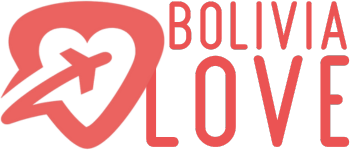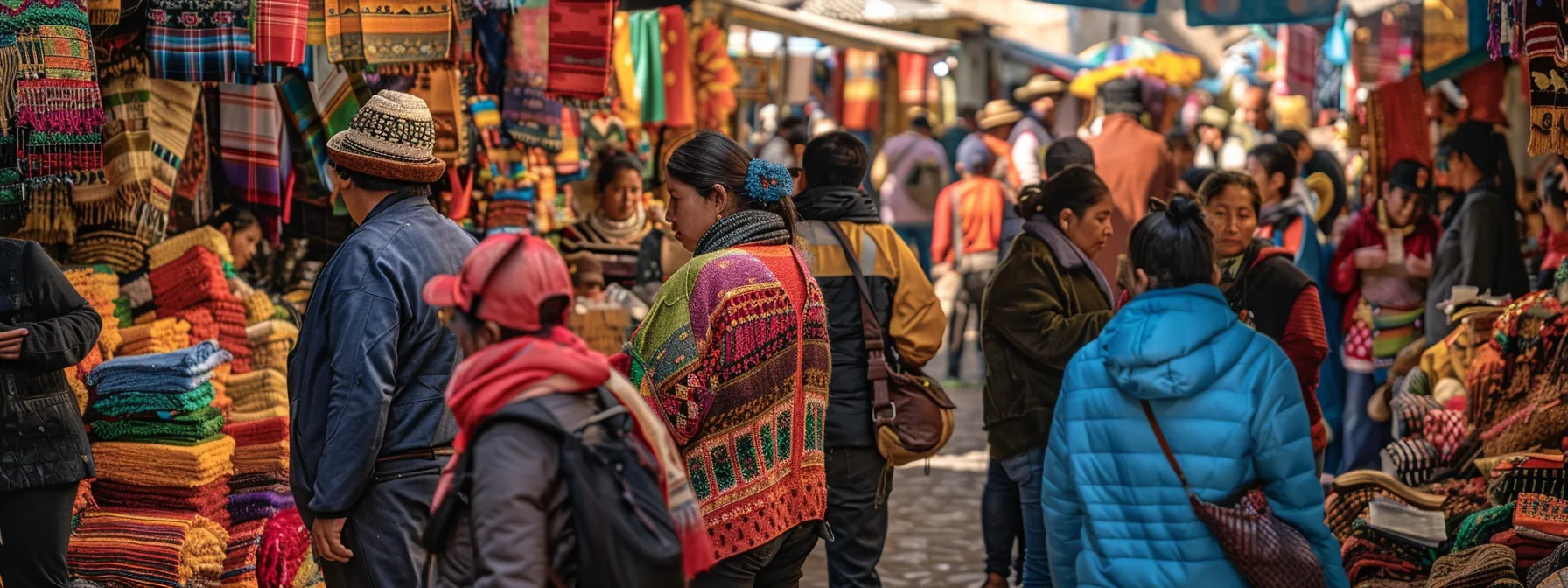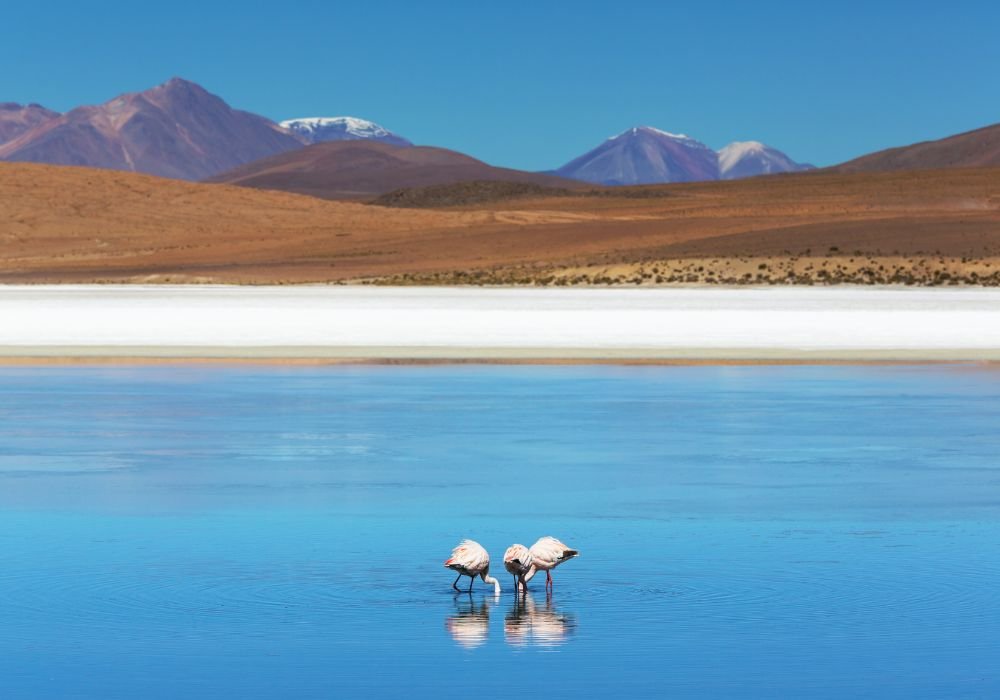Are you ready to explore Bolivia’s breathtaking Andes?
This Bolivia Andes travel plan will guide you through the rugged Altiplano and more. It includes important tips for high-altitude travel, the best hiking trails, and cultural experiences. Enjoy this Bolivia Andes travel itinerary.
You will learn how to stay safe and healthy in the Bolivian highlands. This includes avoiding altitude sickness and staying away from drug-related problems. Whether you’re hiking in the Amazon rainforest or watching geysers on high plateaus, this expert guide is here for you.
- Always acclimatize properly to avoid altitude sickness when exploring high-altitude areas in Bolivia’s Andes
- Pack appropriate gear for rapidly changing weather conditions, including layers and rain protection
- Carry emergency supplies and inform others of your travel plans when hiking in remote areas
- Choose reputable tour operators and guides for safe and informative adventures in Bolivia
- Stay hydrated, use sunscreen, and be prepared for diverse landscapes when trekking through Bolivia’s varied terrain
Visiting the majestic peaks of the Bolivian Andes
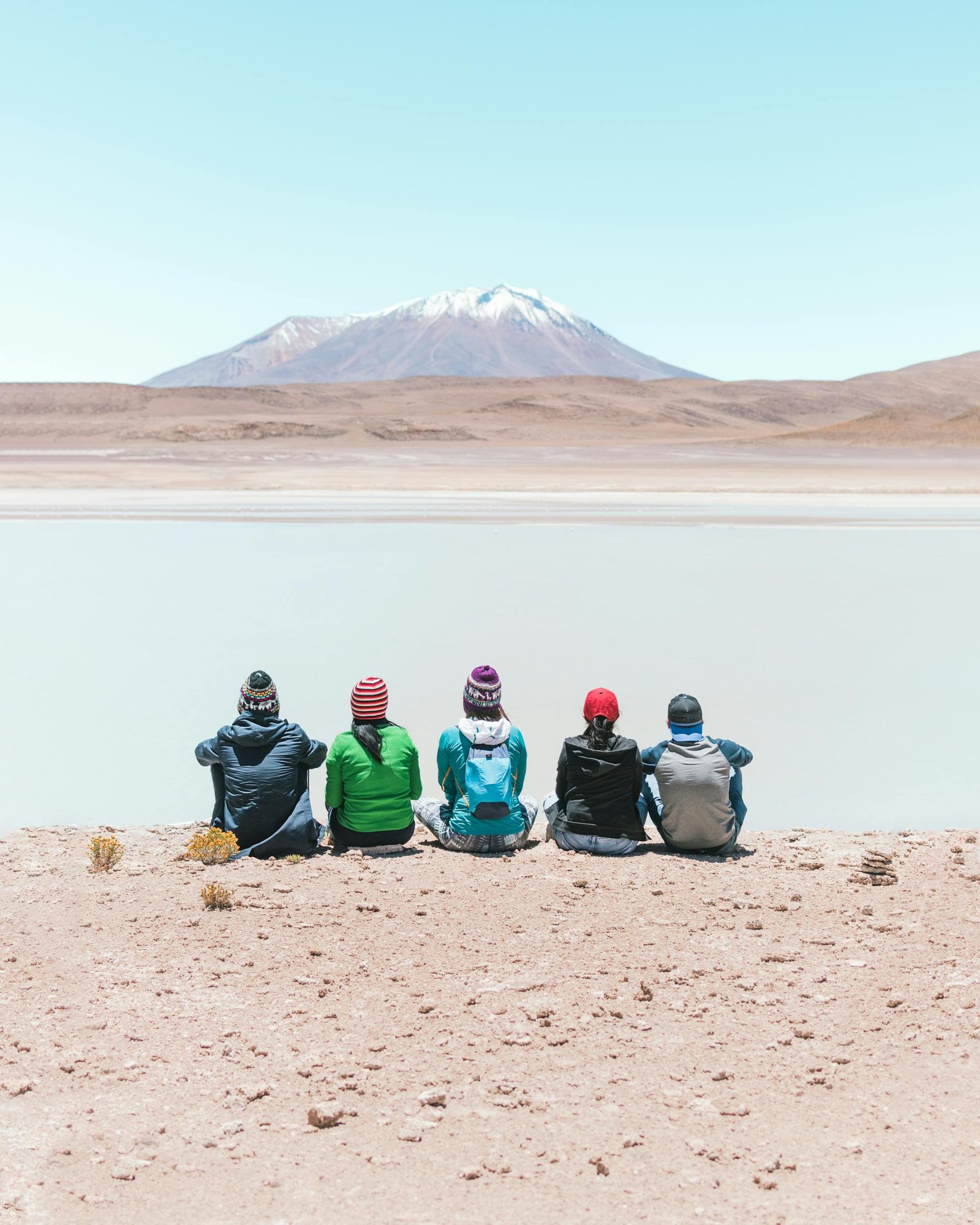
I’ve explored the Bolivian Andes and can guide you through the essentials. From choosing the right peaks to preparing for high altitudes, I’ll cover permits, weather, and local customs. Remember to exchange currency at the international airport and stay alert for pickpocketing. Even with a disability, you can experience these majestic mountains safely. Don’t forget rabies vaccinations if planning extended stays.
Selecting peaks that match your experience level
I’ve hiked numerous peaks in the Bolivian Andes, and I can tell you that choosing the right mountain is crucial. The landscape here varies from snow-capped giants to rolling pampas, offering options for every skill level. If you are a beginner, start with easier treks like Huayna Potosí. It has beautiful views and does not need technical climbing skills.
For intermediate climbers, I recommend tackling Illimani or Sajama. These peaks present more challenges but are still manageable with proper preparation. Keep in mind that language barriers can be a problem in remote areas. It’s a good idea to learn some basic Spanish or hire a local guide. Many tour operators in La Paz offer packages that include transport and equipment rental.
Advanced mountaineers should set their sights on Ancohuma or Illampu. These formidable peaks demand technical skills and acclimatization. I always suggest using public transport to reach base camps – it’s an adventure in itself and gives you a chance to interact with locals. If you plan to combine your trip to Bolivia with Peru, check out the peaks near Lake Titicaca.
They offer a great multi-country adventure. Here’s a quick overview of some popular peaks:
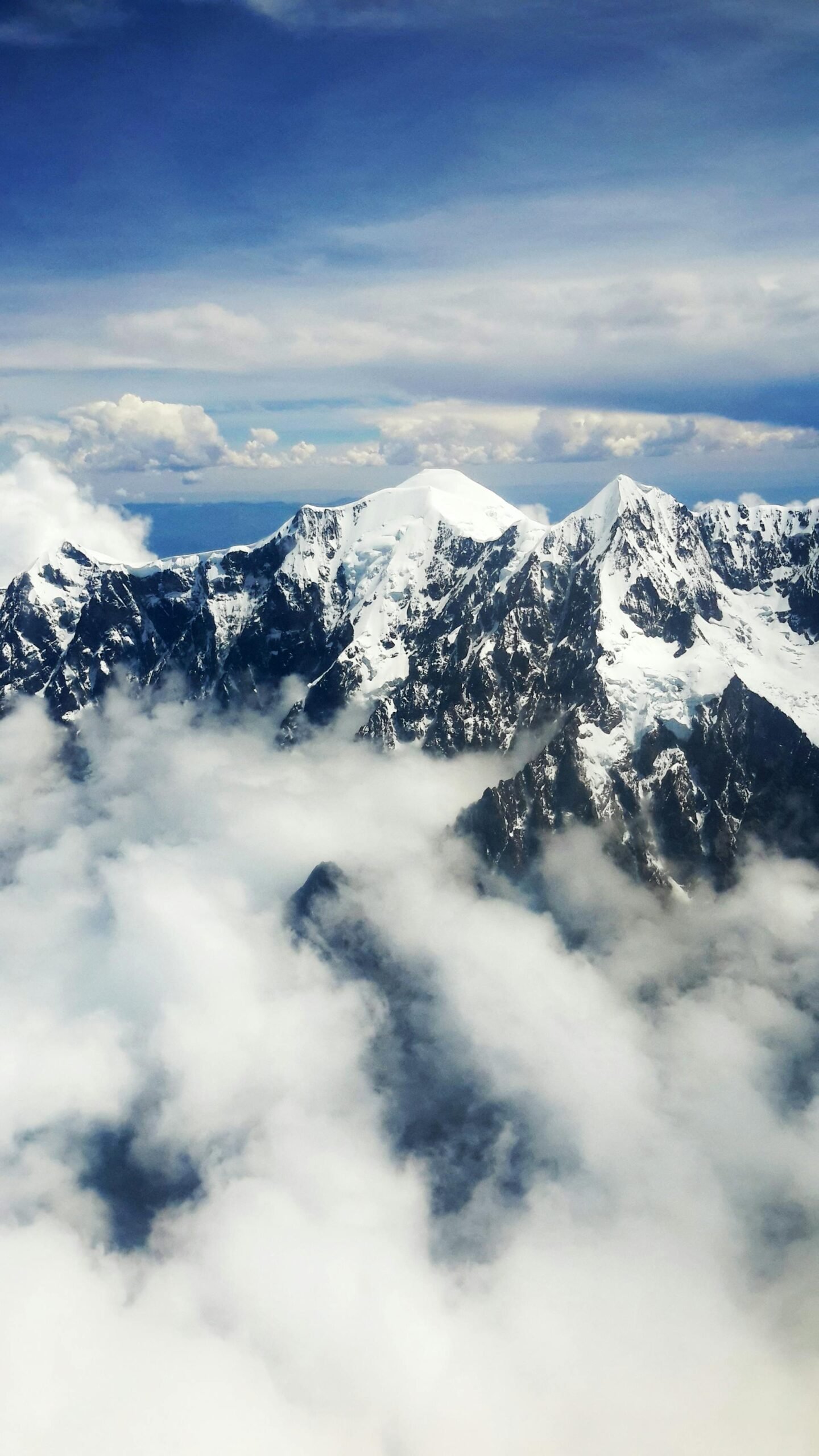
Preparing physically for high-altitude climbing
I’ve learned that physical preparation is crucial for high-altitude climbing in the Bolivian Andes. Before my trip, I worked on cardio exercises and strength training. This helped me adjust to the thin air near Lake Titicaca. Remember, the altitude can affect your body differently than at sea level, so it’s essential to acclimatize properly.
During my climbs, I noticed that proper nutrition played a key role in my performance. I always packed high-energy snacks like peanuts, which are great for quick boosts. The local markets in Puno have many healthy choices. However, pay attention to the exchange rate when you shop. This will help you get the best deals.
One thing that surprised me was how ongoing construction in some areas affected hiking routes. It’s a good idea to check with local guides for the most up-to-date information on trail conditions. Despite these challenges, the breathtaking views of the Andes made every step worthwhile.
Securing permits and hiring expert guides
I’ve learned that securing permits is crucial for climbing in Bolivia’s Andes. When I tackled Illimani, I had to obtain a permit from the local municipality. It’s best to arrange this with a trusted guide service. They know the process well and can help with any language barriers.
Hiring an expert guide is non-negotiable for safety reasons. I once met a group of climbers at El Alto International Airport. They tried to climb alone and found themselves in danger. A good guide keeps you safe and shares interesting facts about the area. They can show you the best places for trout fishing and cool caves to explore.
When I choose a guide, I look for someone with experience in high-altitude areas. They should also know the local conditions well. On my last trip, my guide’s knowledge helped us stay away from places with many mosquitoes. These bugs can be a real bother at lower elevations. Here’s a breakdown of what to look for in a guide:
Anticipating Andes weather conditions
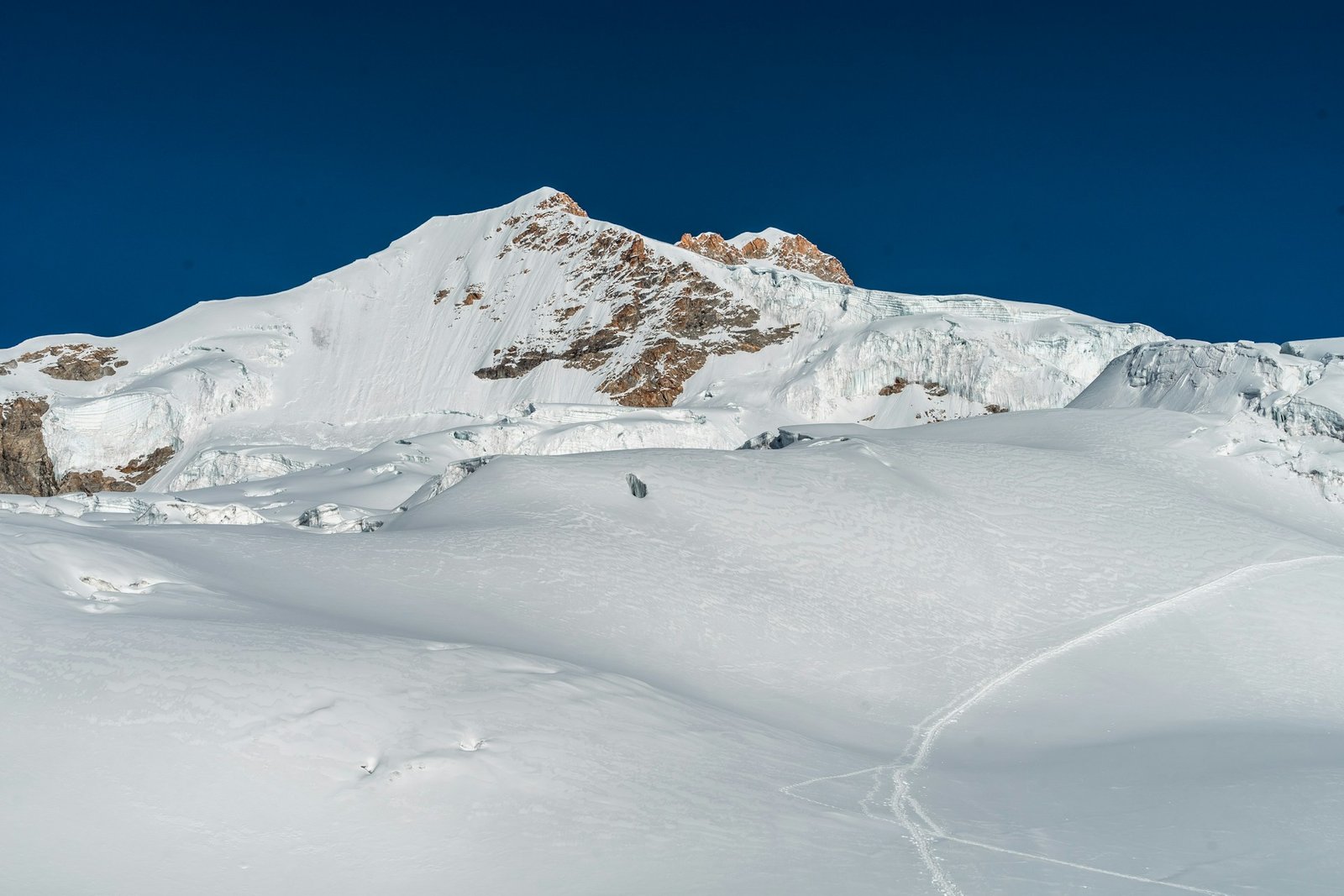
I’ve experienced firsthand how quickly weather can change in the Bolivian Andes. One moment, I was enjoying a cold beer in a sunny village, and the next, I was caught in a sudden downpour. Always pack layers and waterproof gear, even if the forecast looks clear.
During my trek to Sun Island (Isla del Sol), I learned that altitude greatly affects temperature. The sun can be intense during the day, but nights get extremely cold. I recommend bringing sunscreen and warm clothing for those chilly evenings by Laguna Colorada.
Wind is another factor to consider in the Andes. I’ve seen it whip up dust storms in the dry season and create dangerous wind chill in the wet season. Be prepared for both scenarios with appropriate clothing and gear. Here’s a list of essential items I always pack:
- Waterproof jacket and pants
- Warm layers (fleece, thermal underwear)
- Sun protection (hat, sunglasses, high SPF sunscreen)
- Sturdy, waterproof boots
- Gloves and warm hat
Respecting local traditions and protecting the environment
I always make it a point to respect local traditions when hiking in Bolivia. Before my trip to Salar de Uyuni, I learned about Aymara customs. I also asked for permission before taking photos of people or their homes. This approach helped me connect with locals and gain insights into their way of life.
During my trek near Machu Picchu, I witnessed firsthand the impact of tourism on the environment. I now practice Leave No Trace principles, carrying out all my trash and staying on designated trails. When camping, I choose spots that minimize my impact on the fragile Andean ecosystem.
One of my favorite experiences was stargazing in the Bolivian Andes. The Milky Way is incredibly visible here, but light pollution from nearby towns can affect the view. I encourage fellow travelers to support local initiatives that preserve dark skies. Here’s a quick guide to responsible travel in the Andes:
The Bolivian Andes stood tall, their peaks calling. Now, let’s prepare for the journey ahead.
Planning your trip: When to visit and what to pack
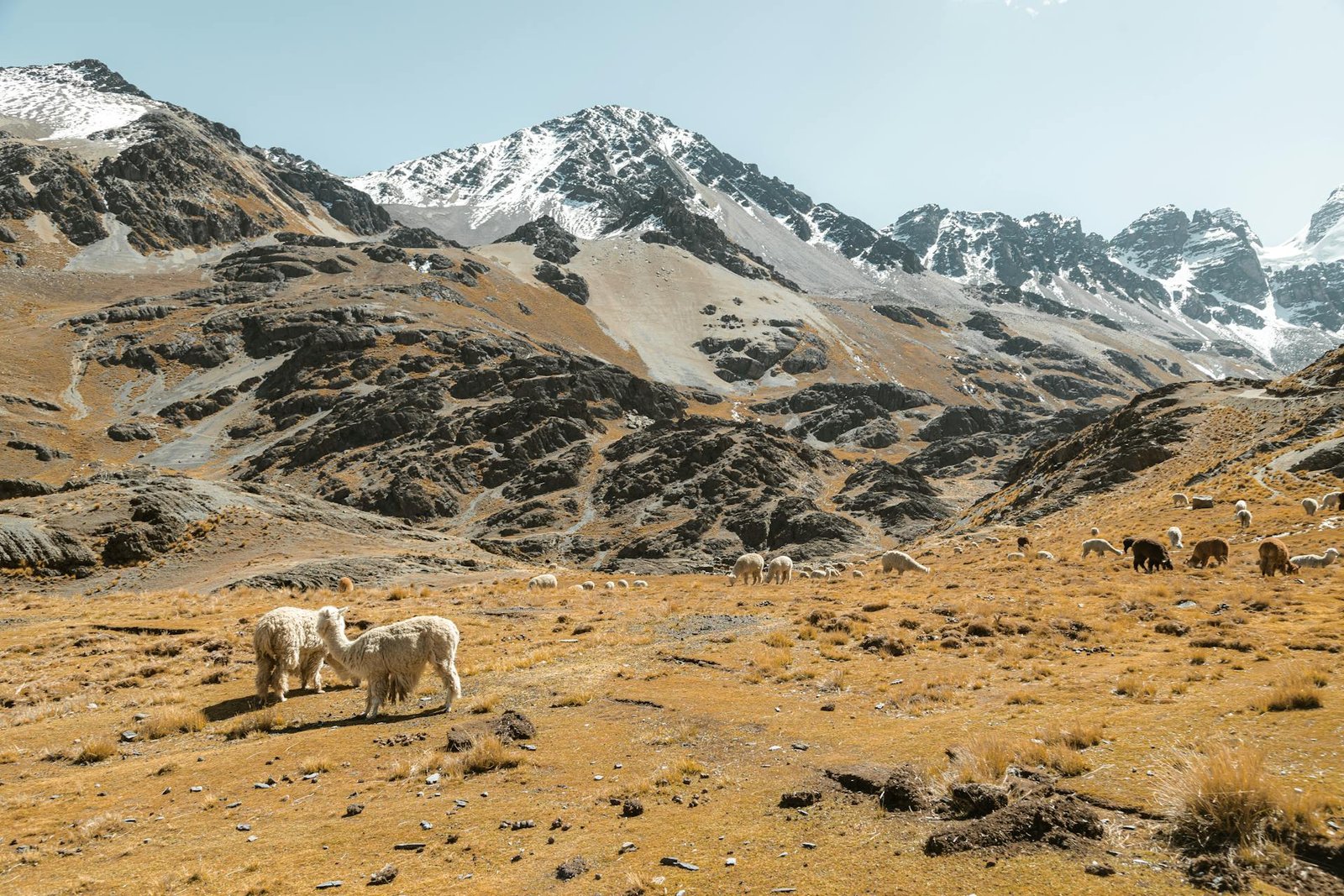
I’ve learned a lot about planning Andes trips. I’ll share tips on when to visit, what to pack, and how to prepare for health challenges like altitude sickness. We’ll cover visas, budgeting, booking mountain lodges, and key Spanish phrases.
From hiking canyons to trying local potato dishes, I’ll help you exercise caution and avoid common travel pitfalls.
Picking the best season for visiting the Andes
I’ve found the best time to visit Bolivia’s Andes is during the dry season, from May to October. The roads are in better shape now. This makes bus travel between cities like La Paz and Santiago de Chile more reliable.
This is when I had my dream trek to the silver mines of Potosí, with clear skies and breathtaking mountain views.
However, don’t rule out the wet season entirely. From November to April, I experienced lush landscapes and fewer tourists. While some roads can be challenging, I discovered hidden gems like lesser-known Incan ruins. Just be prepared for occasional mudslides and plan your bus routes carefully.
If you’re set on specific activities, timing is crucial. I found out that August is great for stargazing in the Salar de Uyuni. June is best for hiking in the Cordillera Real. Remember, high-altitude areas can be chilly year-round, so pack layers regardless of when you visit.
Packing must-have gear for mountain adventures
I always pack a sturdy water bottle and water purification tablets when exploring the Bolivian Andes. The high altitude can increase your risk of dehydration, and clean water isn’t always readily available. I once had to use my glass I used a bottle to collect water from a mountain stream. I purified the water to prevent any illnesses common in South America.
My first aid kit is essential and includes medication for altitude sickness and fever. While hiking near Lake Titicaca, a fellow hiker got sick. We thought it was malaria, but it was actually altitude sickness. Having the right meds on hand can make a huge difference in remote areas.
Don’t forget to pack a reliable headlamp and extra batteries. While hiking at night in the Cordillera Real, my headlamp stopped working. I had to use my phone’s flashlight until I could get help from local police. Here’s a list of my must-have gear for Andean adventures:
- High-quality hiking boots with ankle support
- Warm, layered clothing (including a waterproof outer layer)
- Sun protection (hat, sunglasses, high SPF sunscreen)
- Portable charger for electronic devices
- Small daypack for carrying essentials on shorter hikes
Preparing visas and necessary vaccinations
I always start my Andes trip planning by checking visa requirements. For Bolivia, I found that many nationalities can get a visa on arrival, but it’s best to confirm beforehand. When I visited last time, I had to show proof of my yellow fever vaccination at the border. This was important because I planned to explore the rainforest areas near La Paz.
Packing the right clothing is crucial for Andean adventures. I learned that lightweight, moisture-wicking layers are important for hiking in cold mountains and humid waterfalls. Don’t forget to include sturdy, waterproof boots – they’re a lifesaver when navigating muddy trails after rain.
Before my trip, I got vaccinated for hepatitis A and B. While visiting remote villages, I saw many animals. These vaccinations helped me feel safe and calm. I also packed a basic first aid kit, which came in handy when I got a minor cut while hiking to a hidden waterfall. Here’s a list of essential preparations I always make:
- Check and obtain necessary visas
- Get required vaccinations (yellow fever, hepatitis)
- Pack appropriate clothing for varied climates
- Prepare a comprehensive first aid kit
- Research local healthcare facilities in advance
Planning your budget for the Andes trip
I’ve learned that planning a budget for an Andes trip is important. When I visited Cusco, I saw that accommodation costs varied a lot. You can find budget hostels or luxury lodges with views of the Sacred Valley. I recommend saving extra money for unexpected costs. For example, I once had to buy medication for altitude sickness in La Paz.
Transportation is a significant part of your budget in Bolivia. I saved money by taking local buses between cities, but splurged on a guided tour to see llamas in the highlands. Don’t forget to include the cost of vaccinations. This includes yellow fever, which is often needed to enter some areas.
Food can be surprisingly affordable in Bolivia if you eat like a local. I loved hearty soups and stews in small family-run restaurants. They were not only tasty but also affordable. However, I always budget extra for bottled water and snacks, especially when trekking through remote valleys. Here’s a breakdown of my typical daily expenses in Bolivia:
- Accommodation: $10-$50 (hostel to mid-range hotel)
- Food: $10-$20 (local eateries to tourist restaurants)
- Transportation: $5-$20 (local buses to guided tours)
- Activities: $20-$100 (museum entries to adventure sports)
- Miscellaneous: $10-$30 (souvenirs, tips, emergency funds)
Booking accommodations in mountain villages
Booking places to stay in Bolivia’s mountain villages can be difficult. This is especially true in remote areas like San Pedro de Atacama. I always recommend securing a local SIM card upon arrival to ensure reliable communication when making reservations. This has saved me countless times when trying to reach guesthouses in small Andean towns.
During my travels through the former Inca Empire, I discovered that many mountain lodges offer unique experiences. In one village, I stayed at a family-run inn where they served traditional meat dishes I’d never tried before. It’s worth asking about meal options when booking, especially if you have dietary restrictions.
Remember to be respectful of local customs and gender identity norms when staying in rural areas. I once upset a host by assuming their gender roles. Now, I always ask politely about their preferred pronouns and cultural expectations. This approach has led to more meaningful connections with locals and a deeper understanding of Andean culture.
Learning essential phrases in spanish and quechua
I’ve found that learning basic Spanish is crucial when traveling in Bolivia’s Andes. While exploring the silver mines of Potosí, I found that asking for directions in Spanish was very helpful. It also helped me negotiate prices in the busy markets and discover hidden trails. I always carry a pocket phrasebook, which has saved me countless times when my phone’s translation app failed in remote areas.
Quechua, the indigenous language of many Andean communities, is less common but equally valuable. During my trek to a secluded hot spring near La Paz, I used simple Quechua greetings to connect with local guides. They appreciated my effort and shared insider tips about the best times to visit and avoid crowds. Learning a few key phrases in both languages can greatly enhance your travel experience:
- Spanish: “¿Dónde está el cajero?” (Where’s the ATM?)
- Quechua: “Sulpayki” (Thank you)
- Spanish: “¿Cuánto cuesta?” (How much does it cost?)
- Quechua: “Allin p’unchay” (Good day)
- Spanish: “Necesito ayuda” (I need help)
Remember, many Bolivians appreciate when tourists make an effort to speak their language. In a small village near the Colombia border, I tried to order coffee in Spanish. This led to an interesting talk about local cash crops and traditional farming methods. These interactions often provide unique insights into Andean culture that you won’t find in guidebooks.
The peaks loomed ahead, ancient and imposing. We packed our bags and set out to meet the people who called these mountains home.
Immerse in indigenous cultures along the Andes
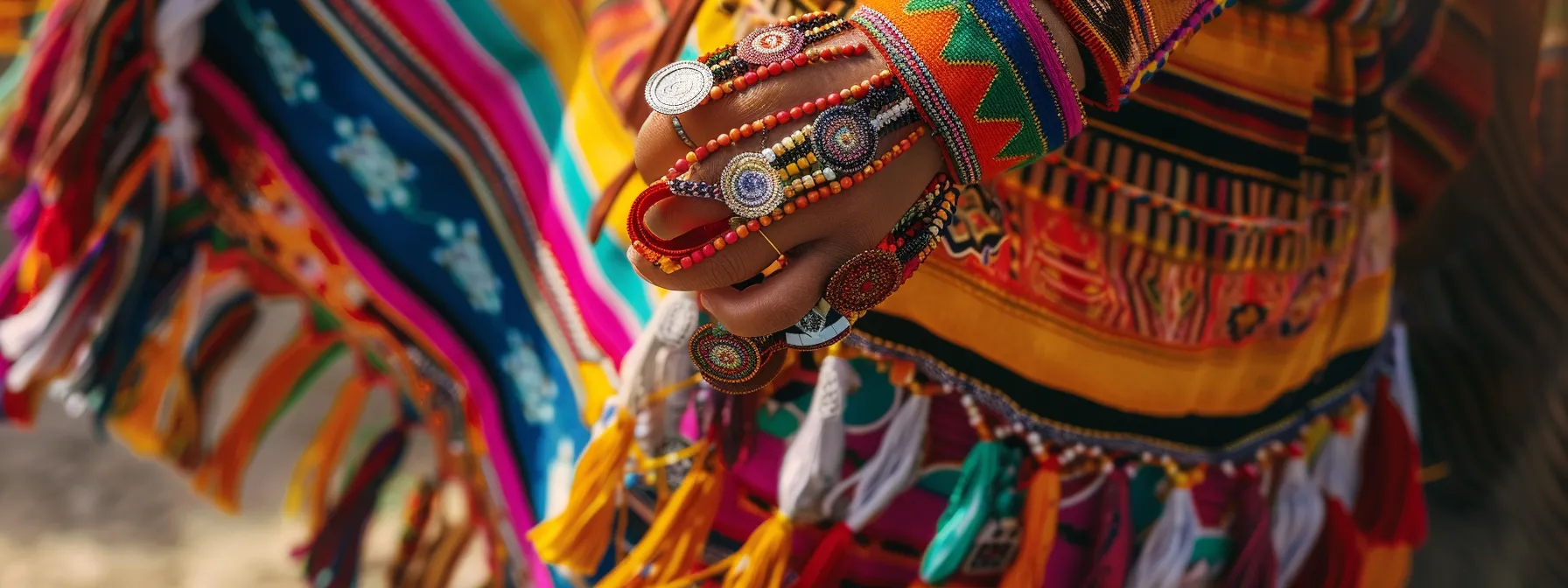
I’ve explored Bolivia’s Andes, immersing myself in indigenous cultures. From visiting traditional villages to joining local festivals, I’ve experienced it all. I’ll share insights on Andean history, buying authentic handicrafts, and respecting cultural norms. Whether you’re exploring the Yungas or Plaza de Armas, understanding local customs is key. Remember to adjust to the altitude as you explore the rich heritage found in every part of Andean life.
Visiting traditional villages and vibrant markets
I love exploring traditional villages in Bolivia’s Andes. In Oruro, I stumbled upon a vibrant market where locals sold handcrafted pork dishes. I always bring my camera to capture real moments. However, I always ask for permission before taking photos of people or their things.
Getting around can be tricky, but I’ve found that taxis are a reliable option in most towns. A friendly taxi driver once gave me a tour of his village near the Argentina border. He showed me hidden gems I would not have found on my own. These unexpected encounters often lead to the most memorable experiences.
When visiting markets, I like to arrive early to watch vendors set up their stalls. It’s fascinating to see how each region has its unique specialties. Here’s a table of some popular markets I’ve visited in Bolivia:
Participating in local festivals and ceremonies
I’ve participated in numerous festivals throughout Bolivia’s Andes, and each one offers a unique glimpse into local culture. I went to the San Pedro festival in a small town near the forest. There were colorful parades. I also saw traditional dances. These events brought the whole community together. It’s important to respect local customs, so I always ask before joining in or taking photos.
One of my favorite experiences was attending a blessing ceremony in a remote village. The shaman used a special bottle filled with local herbs to sprinkle blessed water on participants. These events can be intense. I recommend pacing yourself and drinking enough water. This is important, especially if you are still getting used to the altitude.
Traveling on a budget doesn’t mean missing out on festivities. Many celebrations are free to attend, and street food is often cheap and delicious. I’ve found that smaller, less touristy events often provide the most authentic experiences. Just remember to bring cash, as ATMs can be scarce in rural areas.
Learning about the rich history of Andean cultures
I’ve explored numerous Andean cultural sites, and the basilicas never fail to amaze me. In Copacabana, I marveled at the intricate blend of Catholic and indigenous symbolism in the basilica’s architecture. It’s important to remember that some sacred sites need a special travel visa. I always check the requirements ahead of time to avoid disappointment.
While trekking through the rugged Andean terrain, I’ve encountered ancient Inca water management systems that still function today. These ingenious structures not only provided water for crops but also helped prevent soil erosion. I always bring a water filter when exploring remote areas. Waterborne diseases can be a problem in some places.
During my visits to local museums, I’ve learned about the Tiwanaku civilization’s advanced knowledge of astronomy and agriculture. Their ability to thrive in such challenging terrain is truly impressive. I once joined a guided tour led by an archaeologist. This experience gave me deep insights into how ancient Andean cultures adapted to their environment.
Purchasing authentic handicrafts from local artisans
I’ve discovered that purchasing authentic handicrafts in Bolivia’s Andes is an adventure in itself. While exploring an archaeological site near La Paz, I found a small workshop. There, artisans were making beautiful textiles. I always carry my travel documents with me, as some remote villages require permits for visitors.
During my travels, I’ve learned to distinguish between mass-produced souvenirs and genuine local crafts. In one mountain village, I watched skilled weavers create vibrant tapestries depicting native species of the region. It’s important to pay attention to your surroundings. Petty theft can happen in crowded markets. However, I have never seen any serious violence.
I once hitched a ride in a local’s vehicle to reach a remote artisan community known for their silverwork. The bumpy journey was worth it, as I found unique pieces that told stories of Andean culture. Remember to bargain respectfully and be prepared to pay in cash, as many small villages don’t have ATMs.
Understanding and respecting cultural norms and etiquette
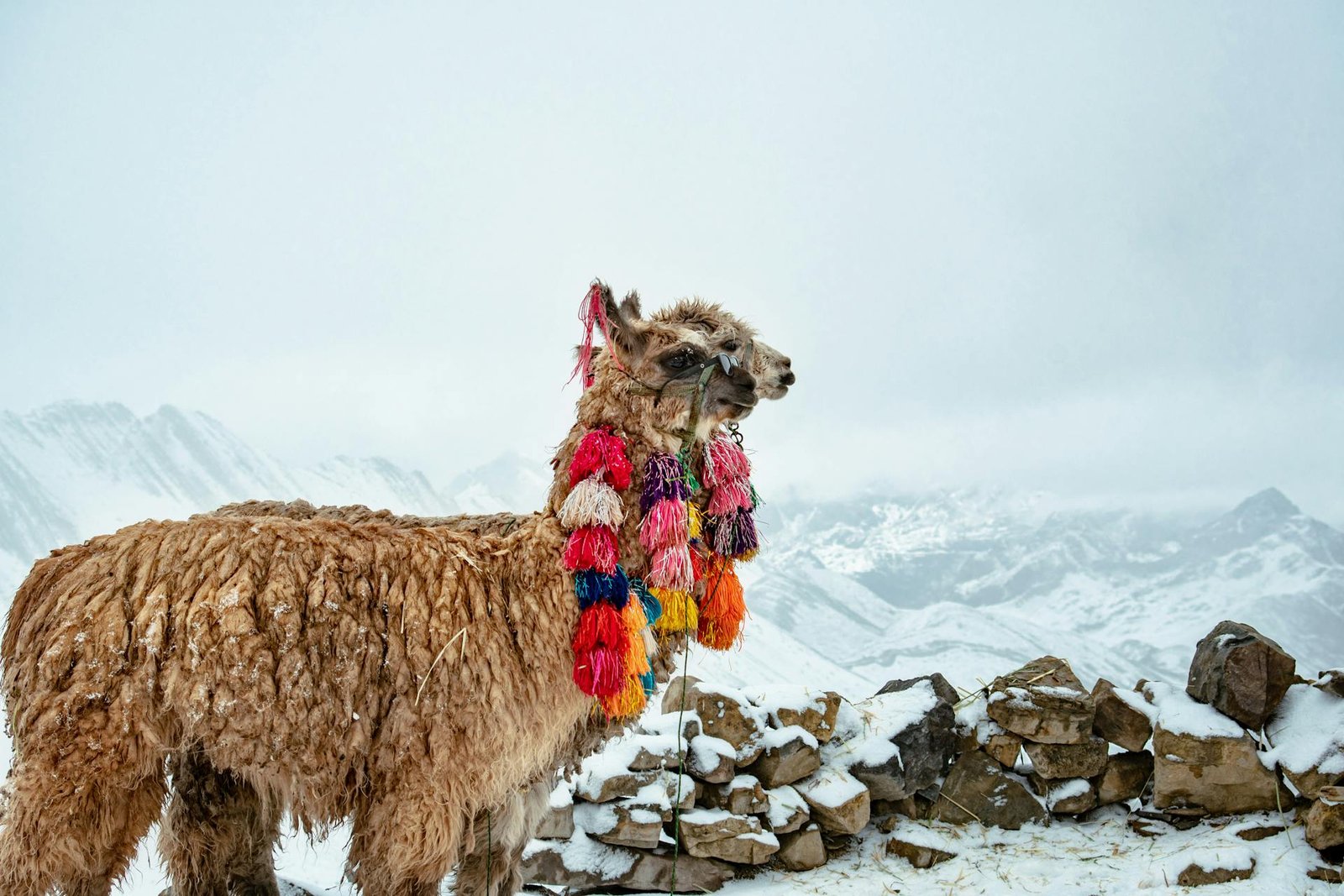
I’ve learned that understanding cultural norms in Bolivia’s Andes is crucial for respectful tourism. When I visit remote villages, I always take off my hat and sunglasses. This shows respect, especially in sacred places or when crossing traditional bridges. I once made the mistake of refusing a bowl of soup from a local family. I didn’t know it was rude to decline their hospitality.
Exploring the unique architecture of Andean communities has taught me to be mindful of local customs. In a village near the Atacama Desert, I asked for permission to photograph the colorful buildings. Some residents think that photos can capture their spirit. I have found that learning some basic Quechua phrases helps show respect. It often leads to more genuine interactions with locals.
During my travels, I’ve discovered that time is viewed differently in Andean culture. I’ve learned to be patient and flexible, especially when plans change or things move slower than I’m used to. This relaxed attitude has helped me enjoy the rich traditions of the region. I take part in old farming practices and share leisurely meals with new friends.
Night fell on the Andes. We needed to move on, to find our way through the Bolivian highlands.
Getting around the Bolivian highlands: Transportation guide
I have traveled a lot in Bolivia’s highlands. I went from Alto La Paz to Madidi National Park. Now, I will share my tips for getting around. I will talk about long-distance bus trips. I will also discuss how to choose reliable drivers. Additionally, I will cover using local transport, such as trufis and micros. I will explain how to rent cars and how to book domestic flights.
Whether you’re backpacking or exploring indigenous peoples’ lands, knowing how to get around is key. Don’t forget to stay hydrated – I always pack extra water for those long rides!
Traveling by bus: Tips for long-distance journeys
I’ve taken many bus rides through Bolivia’s Andes. I can tell you that getting ready for altitude sickness is very important. On my trip to the Sacred Valley, I packed coca tea and acetazolamide. These help with the effects of high elevation. These long trips can be challenging, but the breathtaking views of snow-capped peaks and diverse wildlife make it worthwhile.
During my bus travels, I’ve witnessed firsthand the impact of climate change on the Andean landscape. Glaciers that once dominated the horizon are noticeably smaller, affecting local water supplies. I always carry extra water and suggest that other travelers do the same. Bus breakdowns in remote areas happen often.
Safety is a top priority when choosing bus companies in Bolivia. I once opted for a cheaper option and regretted it when we had to stop for hours due to mechanical issues. Now, I always research companies thoroughly and pay a bit more for reliability. It’s important to know about Chagas disease risks in rural areas. I bring my own blanket to avoid using possibly contaminated linens on overnight buses.
Choosing reliable drivers and reputable tour operators
I’ve learned that choosing reliable drivers in Bolivia’s Andes is crucial for a safe journey. When I traveled from Lima to the Amazon River, I chose trusted tour operators who focused on safety. I always read reviews and ask other travelers for recommendations. This is especially important when I visit remote areas of Latin America. The road conditions there can be tough.
During my trips, I’ve found that the best drivers are often those who are familiar with local customs and terrain. On one memorable trip, my driver knew the area well. This helped us avoid a dangerous route with recent landslides. I always pack insect repellent for long drives. Stopping in humid areas can expose you to mosquitoes that may carry viruses.
I’ve discovered that reputable tour operators often provide valuable extras that enhance the travel experience. On my last trip to the Andes, the company I chose shared information about local plants and animals.
They made stops at hidden viewpoints that I would have missed otherwise. I always double-check their emergency plans. I also make sure they have the right licenses before booking. This is especially important for activities in remote areas.
Utilizing local transport: Trufis, micros, and taxis
I’ve found that using trufis, the shared taxis of Bolivia, is an affordable way to explore the Andes. On my trip to Laguna Verde. I got into a trufi with locals. This saved me money and helped me learn about Bolivian culture. Always remember to carry your ID, as drivers may ask for it, especially when crossing regional borders.
Micros, the small buses that zip around cities, have been my go-to for short trips in La Paz. They’re perfect for reaching places like the alpaca markets or boat docks for lake excursions. I once took a bus to the edge of town. There, I caught a boat to a hidden island in Lake Titicaca. It was an adventure I would not have found otherwise.
When it comes to taxis in Bolivia, I always negotiate the fare before getting in, especially for longer journeys. On my trip from La Paz to the Ecuador border, I shared a taxi with other travelers. We split the cost and made new friends. Just be sure to use official taxis, identifiable by their numbers on the side, to ensure a safe ride.
Renting vehicles: Requirements and road conditions
I’ve rented vehicles in Bolivia’s Andes, and it’s crucial to acclimatize before hitting the road. During my first trip, I struggled with altitude sickness and vomiting while driving through mountain passes. I usually take a few days to adjust to the elevation before renting a car. I often relax in bed and enjoy local fruit to help with the change.
The road conditions in Bolivia can be challenging, especially on remote highways. I once encountered a landslide that blocked the route to a hidden waterfall, forcing me to take a detour. It’s essential to rent a sturdy 4×4 vehicle and check it thoroughly before setting off. I always pack extra water and snacks in case of unexpected delays.
When renting a vehicle in Bolivia, you’ll need a valid driver’s license and passport. I’ve found that some rental agencies also require an international driving permit. It’s wise to familiarize yourself with local driving laws and customs before hitting the road. Here’s a list of items I always check before renting a car in Bolivia:
- Vehicle’s maintenance history
- Spare tire and jack
- Emergency kit with first aid supplies
- GPS or updated paper maps
- Insurance coverage details
Booking domestic flights for quick city travels
I’ve found that booking domestic flights in Bolivia can be a game-changer for quick city travels. When I needed to get from La Paz to Cochabamba quickly, I opted for a short flight instead of a long bus ride. It saved me time and energy, allowing me to explore more of the city’s vibrant markets and colonial architecture.
During my travels, I’ve learned to be prepared for potential immigration checks, even on domestic flights. Once, while flying to Santa Cruz to visit nearby ruins, I was asked to show my passport. It’s always a good idea to carry your travel documents, just in case. These flights provide amazing views of the Andes. You can also see Moon Island (Isla de la Luna) on Lake Titicaca (Lago Titicaca).
I’ve discovered that booking flights in advance can lead to significant savings. When I planned my trip to the ancient ruins near Tiwanaku, I booked my flight to La Paz a month early. I found a great deal on the flight. However, it’s essential to factor in transport to and from the airports, as they’re often located outside city centers. Here’s a comparison of transport options I’ve used in Bolivia:
The bus rumbled to a stop. We laced our boots, ready to hit the trails.
Top hiking trails for adventure seekers in Bolivia
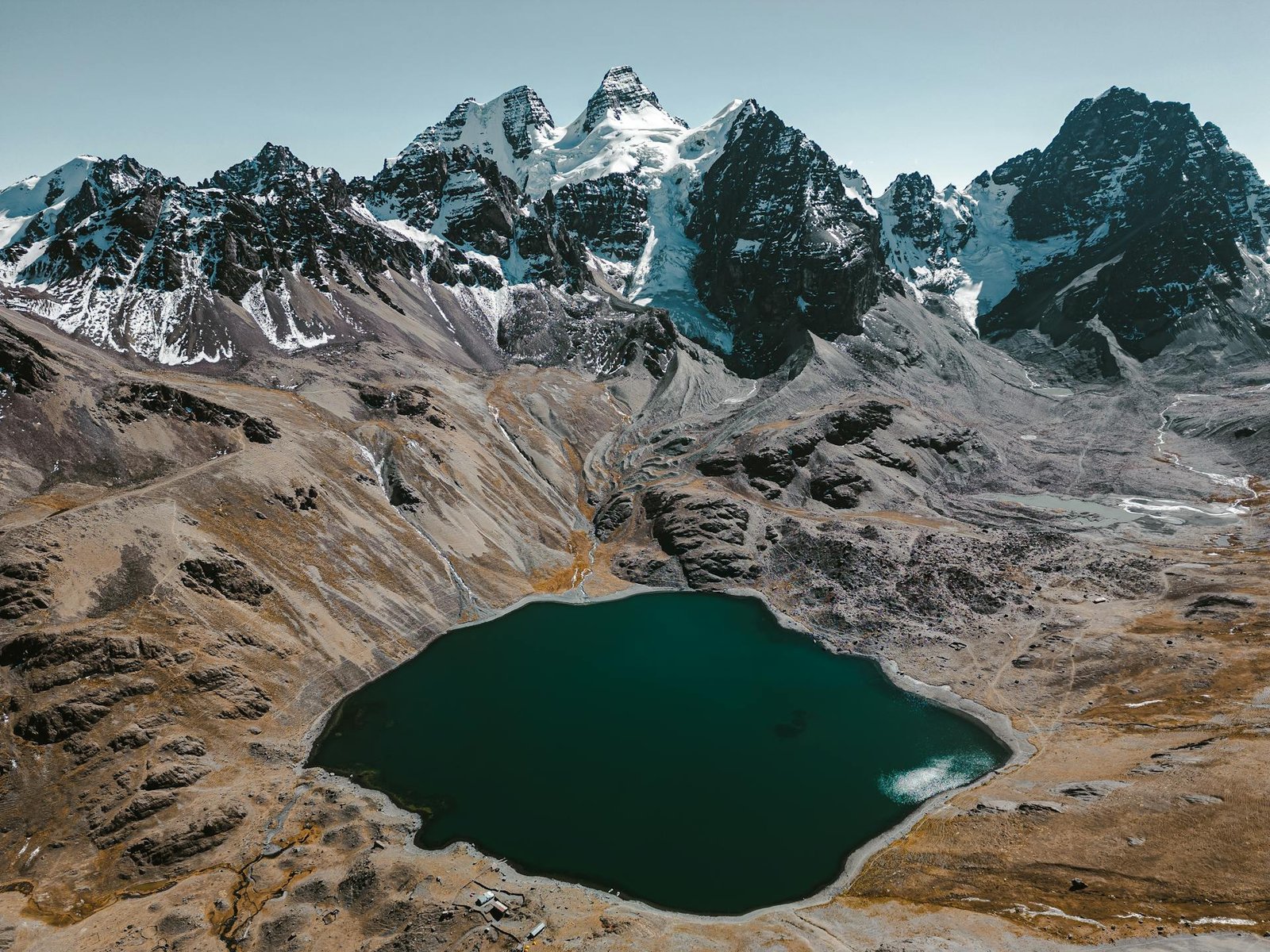
I’ve hiked Bolivia’s top trails and can guide you through the best routes. From the scenic Choro Trail to ancient Inca paths on the Takesi Trail, I’ll share my experiences. We’ll cover summiting Huayna Potosi, exploring Cordillera Apolobamba, and the Laguna Glaciar hike. I’ll also give tips on choosing safe guided tours. Always carry emergency supplies and avoid tap water. Bolivia’s trails can be tough, but the views are amazing!
Conquering the choro trail: A scenic adventure
I’ve hiked the Choro Trail multiple times, and it’s truly a scenic adventure that offers incredible biodiversity. Starting near La Paz, this ancient Inca path descends from chilly mountain peaks to lush cloud forests. I always check that my health insurance covers high-altitude activities before I go. The trail starts at an amazing 4,900 meters.
Along the way, I’ve encountered remnants of Inca ruins, which remind me that this trail is part of a UNESCO World Heritage site. The changes in the landscape always amaze me. One day, I am trekking through snow. The next day, I am surrounded by orchids and hummingbirds. I always pack coca tea to help with altitude adjustment, especially during the first challenging day.
One thing to remember is that some local communities along the trail have basic places to stay and sell alcohol. After a long day of hiking, it can be tempting to relax with a drink. However, I avoid alcohol at high altitudes. It can make altitude sickness worse. Instead, I focus on staying hydrated and enjoying the incredible starry nights that the clear mountain air provides.
Trekking the takesi trail: Ancient inca paths
I’ve trekked the Takesi Trail multiple times, and it never fails to amaze me with its ancient Inca paths. The trail winds through diverse landscapes, from high mountain passes to lush valleys. On my last hike, I saw a group of women carrying heavy bags of produce. This reminded me of the gender roles that still exist in rural Andean communities.
One memorable experience was getting caught in a sudden rain shower. This happened while I was crossing a very open part of the trail. I quickly learned the importance of packing a good rain jacket and waterproof boots. The unexpected downpour also brought out vibrant cacti flowers, creating a stunning contrast against the misty mountains.
Altitude can be a challenge on the Takesi Trail, and I’ve had my share of headaches during the first day. I always recommend acclimatizing in La Paz before starting the trek. To combat altitude sickness, I bring coca leaves to chew and avoid heavy meals. The local communities along the trail often offer a delicious potato sauce that’s perfect for fueling long hikes. Here’s what I always pack for the Takesi Trail:
- Sturdy hiking boots
- Rain gear
- Altitude sickness medication
- High-energy snacks
- Water purification tablets
Venturing into the Cordillera Apolobamba trails
I’ve explored the Cordillera Apolobamba trails, and they’re a far cry from the crowded Inca Trail to Machu Picchu. These remote paths offer solitude and breathtaking views of glacial lakes and snow-capped peaks. I always pack acetazolamide for altitude sickness, as some passes reach over 5,000 meters.
During my trek, I stumbled upon an ancient monastery nestled in a hidden valley. The crumbling stone walls and weathered roof told stories of a bygone era. Unlike in Europe, where historical sites are often well-kept, this monastery felt natural and untouched by modern repairs.
One of my favorite experiences was camping under the stars near a pristine alpine lake. The night sky here is incredibly clear, rivaling even the best stargazing spots in Europe. I always bring a good quality sleeping bag, as temperatures can drop dramatically after sunset, even in summer months.
Summiting Huayna Potosi: Preparation and tips
I’ve summited Huayna Potosi, and let me tell you, proper preparation is key. Before my climb, I spent a few days in La Paz to acclimatize, which helped immensely with altitude sickness. I made sure my travel insurance covered high-altitude activities, as medical emergencies can be costly in remote areas.
During my ascent, I was struck by the diverse fauna I encountered. From hardy Andean geese near the base to resilient viscachas scurrying across rocky slopes, the mountain’s ecosystem is fascinating. I always pack biodegradable toilet paper and a small trowel for bathroom breaks. It is important to leave no trace and avoid soil contamination.
One thing I learned the hard way is the importance of proper gear maintenance. After a long day of climbing, I forgot to dry my boots well. This caused a bad fungal infection. Now, I always bring extra socks and antifungal powder to keep my feet healthy. Here’s a quick checklist of essential items I pack for summiting Huayna Potosi:
Embarking on the Laguna Glaciar hiking experience
I embarked on the Laguna Glaciar hike during my exploration of Bolivia’s Andes, and it was an unforgettable experience. The trail had stunning views of snow-covered mountains and clear glacial lakes. They reminded me of the art I saw in La Paz galleries showing Andean landscapes. As I walked, I wondered how the Spanish Empire had shaped the nearby communities over the years.
While hiking, I found a small island in a glacial lake. It was a great place for lunch and bird watching. I was thankful for my LATAM Airlines flight to Bolivia. It got me there smoothly and let me start my adventure well-rested. The high altitude brought some challenges, but I was ready. I had altitude sickness medicine from a local clinic I visited before the trek.
The Laguna Glaciar trail challenged my Spanish skills. I talked with local guides and other hikers during the hike. I learned about the area’s unique ecosystem and the impact of climate change on the glaciers. Here are some key things I packed for this memorable hike:
- Sturdy hiking boots with ankle support
- Layers of warm, moisture-wicking clothing
- High-energy snacks and plenty of water
- A first-aid kit with altitude sickness medication
- A camera to capture the stunning landscapes
Choosing guided tours for safe adventures
I’ve learned that choosing the right guided tour is crucial for safe adventures in Bolivia’s Andes. When I planned my trip to Isla Incahuasi, I researched tour operators thoroughly, checking reviews and safety records. I found a reputable company that offered small group sizes and experienced guides familiar with the wet season conditions.
During my trek near Ollantaytambo, I appreciated the local knowledge my guide provided. He knew the best spots for watching the sunrise over the mountains and shared insights about the area’s history and culture. I always ask about emergency protocols and equipment before booking a tour, especially for high-altitude hikes.
One of my most memorable experiences was a guided tour that crossed into Chile. The guide’s expertise in border crossing procedures made the journey smooth and stress-free. I suggest finding tour operators that provide a good mix of adventure and safety. This is important if you plan to explore remote areas of the Andes.
Conquering Bolivia’s trails demands more than just stamina. Now, let’s tackle the invisible challenge of high altitudes.
Staying safe and healthy at high altitudes in Bolivia
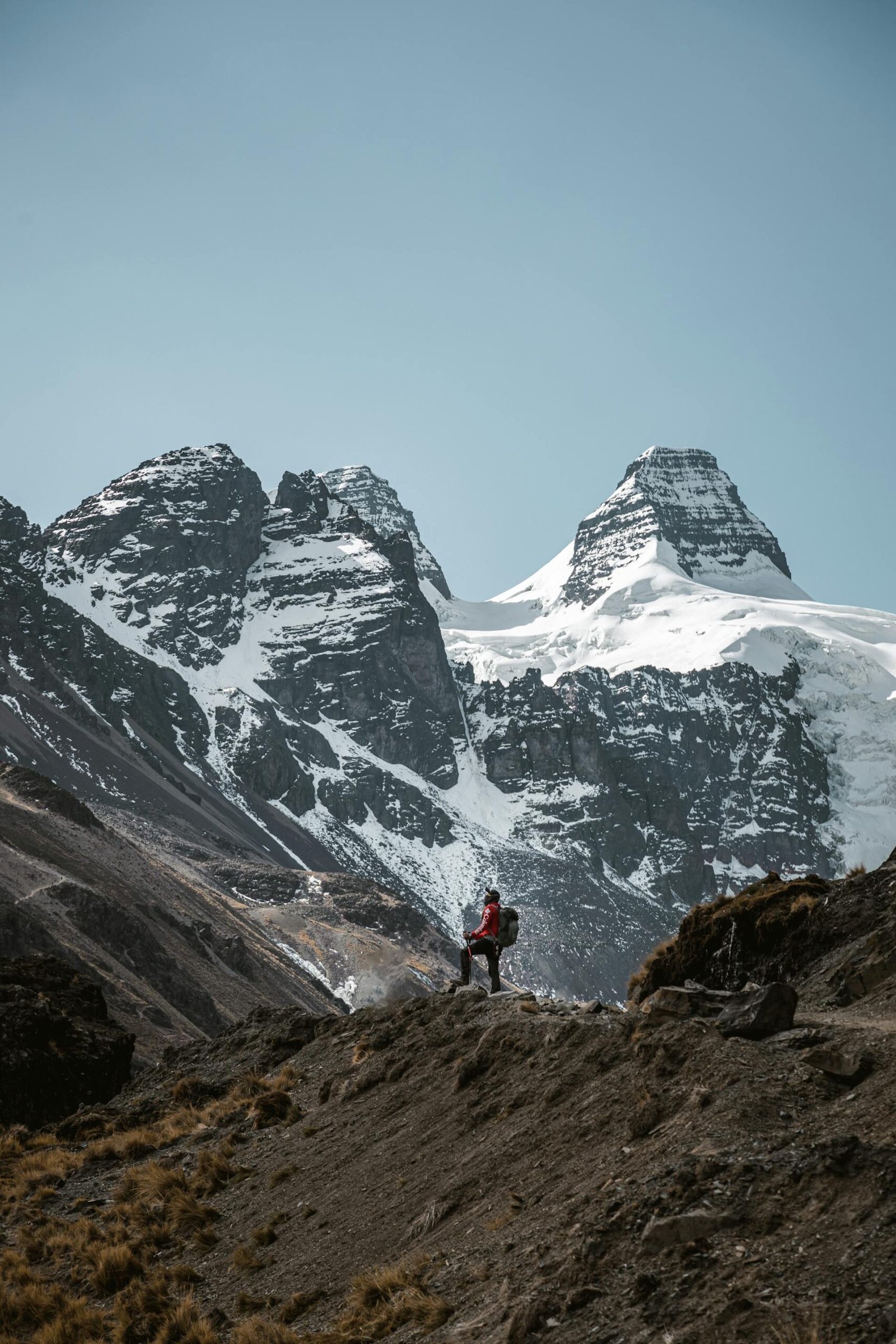
I’ve learned a lot about staying safe and healthy in Bolivia’s high altitudes. From managing altitude sickness to proper acclimatization, I’ll share my tips for thriving in the mountains. I’ll cover hydration, emergency preparedness, and the importance of travel insurance. I’ll also explain weather hazards and safety precautions. Don’t forget to consult a health professional about chikungunya risks before your trip to Bolivia’s beautiful lakes!
Identifying and managing altitude sickness symptoms
I’ve experienced altitude sickness firsthand while exploring the Aymara people’s lands in Bolivia’s Andes. The symptoms hit me hard during a train ride to Torotoro National Park – dizziness, nausea, and a pounding headache. I learned quickly that staying hydrated and taking it slow are crucial for managing these symptoms at high altitudes.
After visiting Rurrenabaque, I returned to La Paz and felt the altitude difference immediately. To combat this, I used a local website to find a clinic specializing in altitude sickness. They recommended acetazolamide, which helped me acclimatize faster. I also made sure to avoid alcohol and heavy meals for the first few days.
One trick I picked up from seasoned travelers is to chew coca leaves, a traditional remedy used by the Aymara people. While exploring Torotoro National Park, I found that this natural method, combined with plenty of rest, helped alleviate my mild altitude symptoms. Remember, if symptoms persist or worsen, it’s crucial to descend to lower altitudes and seek medical help.
Acclimatizing properly before high altitude treks
I learned the hard way that proper acclimatization is crucial before tackling high-altitude treks in Bolivia. When I first arrived in Sucre, I spent a few days exploring the city’s lovely streets. I also tried local dishes from street menus. This helped my body adjust to the new place. This gradual approach helped me avoid severe altitude sickness and made my subsequent trek much more enjoyable.
One of my favorite acclimatization methods was riding Mi Teleférico in La Paz. Not only did it offer breathtaking views of the city, but it also helped me slowly adjust to higher altitudes. I noticed my skin got drier at high elevations. To help, I used moisturizer often and drank plenty of water to stay hydrated.
During my acclimatization period, I met travelers from diverse backgrounds and sexual orientations, all preparing for high-altitude adventures. We shared tips and experiences, which made the process more enjoyable and informative. I discovered that taking short walks every day helped me build stamina. Gradually increasing my activity level prepared me for the tough hikes ahead.
Staying hydrated and nourished in the mountains
I learned the hard way that staying hydrated in Bolivia’s mountains is crucial. While hiking near Eduardo Abaroa National Reserve, I made sure to drink enough water and sports drinks. This helped me deal with the high altitude. I always bring a reusable water bottle and purification tablets. It can be hard to find safe drinking water in remote areas.
Nourishing my body properly was key to my success on the Yungas Road trek. I packed high-energy snacks like nuts and dried fruit, which were easy to eat on the go and provided essential nutrients. In the jungle regions, I avoided raw foods and unpeeled fruits. This helped prevent foodborne illnesses. Access to health care can be limited in these areas.
One thing I wish I’d known earlier is that my credit card wasn’t always accepted in small mountain villages. I now make sure to carry enough cash for food and emergencies. During my time in the Andes, I discovered that coca tea is not only a cultural staple but also helps with altitude adjustment and provides a boost of energy for those long hikes.
Preparing for emergencies: Contacts and resources
I always keep emergency contacts handy when trekking in Bolivia’s Andes. Coming from sea level, I learned the importance of having local hospital numbers and my embassy’s contact info saved in my phone. I also jot them down on paper in case my battery dies at high altitudes. During my stay at a hostel in La Paz, I made sure to inform the staff of my trekking plans and expected return date.
Bottled water is a must-have in my emergency kit, along with high-energy snacks like quinoa bars. I have found that many Bolivians in remote areas are very helpful in emergencies. However, it is also important to be self-reliant. One time, I felt dizzy while hiking. I was glad I had packed electrolyte tablets for my water. They helped me feel better quickly.
I always research local emergency services before heading into the mountains. In one small town near Sucre, I discovered they had a volunteer rescue team specializing in high-altitude emergencies. Knowing this gave me peace of mind during my trek. I also carry a basic first aid kit and have learned a few key Spanish phrases related to medical emergencies, which has proven invaluable in communicating with local Bolivians during stressful situations.
Obtaining travel insurance with ,edical coverage
I always make sure to get comprehensive travel insurance before heading to Bolivia’s Andes, especially during the dry season when I’m planning to tackle Huayna Potosí. My policy covers high-altitude medical emergencies, which is crucial when you’re exploring remote areas where access to healthcare can be limited. I learned this the hard way when a fellow traveler got hit with altitude sickness and had to be evacuated – his insurance saved him from a massive bill.
When choosing insurance, I look for policies that cover adventure activities and have a 24/7 assistance hotline. I once had to use this service in San Pedro de Atacama after a minor accident, and it was a lifesaver. It’s important to see if the policy covers tuberculosis screenings. This can be a concern in some areas of Bolivia. I always keep my insurance documents easily accessible on my phone and carry a physical copy just in case.
One thing I’ve noticed is that some policies have exclusions for certain high-risk activities or areas known for crime. Before my trip to La Paz, I made sure my insurance covered theft and mugging, as pickpocketing can be an issue in crowded areas. Here’s a breakdown of what I typically look for in a travel insurance policy for Bolivia:
Understanding weather aazards and safety precautions
I’ve experienced firsthand how quickly weather can change in Bolivia’s Andes. While exploring Cerro Rico near Potosí, I encountered a sudden hailstorm that caught me off guard. Now, I always check local forecasts and pack layers, even when visiting warmer areas like Santa Cruz de la Sierra. It’s crucial to be prepared for rapid temperature drops, especially when venturing into remote areas far from civilization.
During my trek through Amboró National Park, I learned the importance of having proper gear to combat both sun and rain. I always carry a wide-brimmed hat, sunscreen, and a lightweight rain jacket. These items have protected me from sunburn and hypothermia. This is especially true at higher elevations. The air is thinner there, and the weather can change quickly. I also keep an emergency blanket in my daypack, which came in handy when I got stuck on a trail during an unexpected downpour.
One safety precaution I never overlook is informing someone of my travel plans, especially when hiking in isolated areas. After hearing stories of theft in some tourist spots, I’ve made it a habit to use a money belt and keep valuables secure. I once had to find shelter in a small village near Amboró National Park during a bad thunderstorm. The local community’s understanding of weather patterns was very helpful. Their insights have taught me to respect local wisdom and always err on the side of caution when it comes to Andean weather.
Conclusion
Exploring Bolivia’s Andes offers a unique blend of natural wonders, cultural immersion, and thrilling adventures. From climbing tall mountains to exploring local markets, this expert guide gives travelers important tips.
It helps ensure a safe and enjoyable trip through the varied Andean landscape. Proper preparation, including acclimatization, understanding local customs, and securing reliable transportation, is crucial for fully experiencing the region’s breathtaking beauty and rich heritage.
By using these expert tips and facing the challenges of high-altitude travel, adventurers can make lasting memories. They can also respect the environment and local communities in Bolivia’s stunning Andes.
